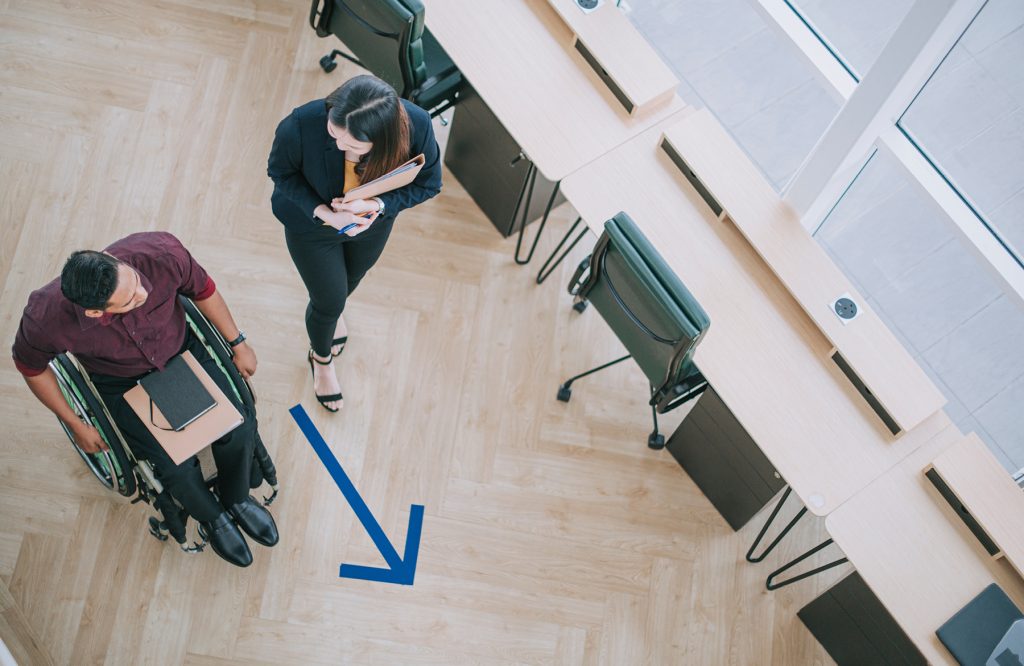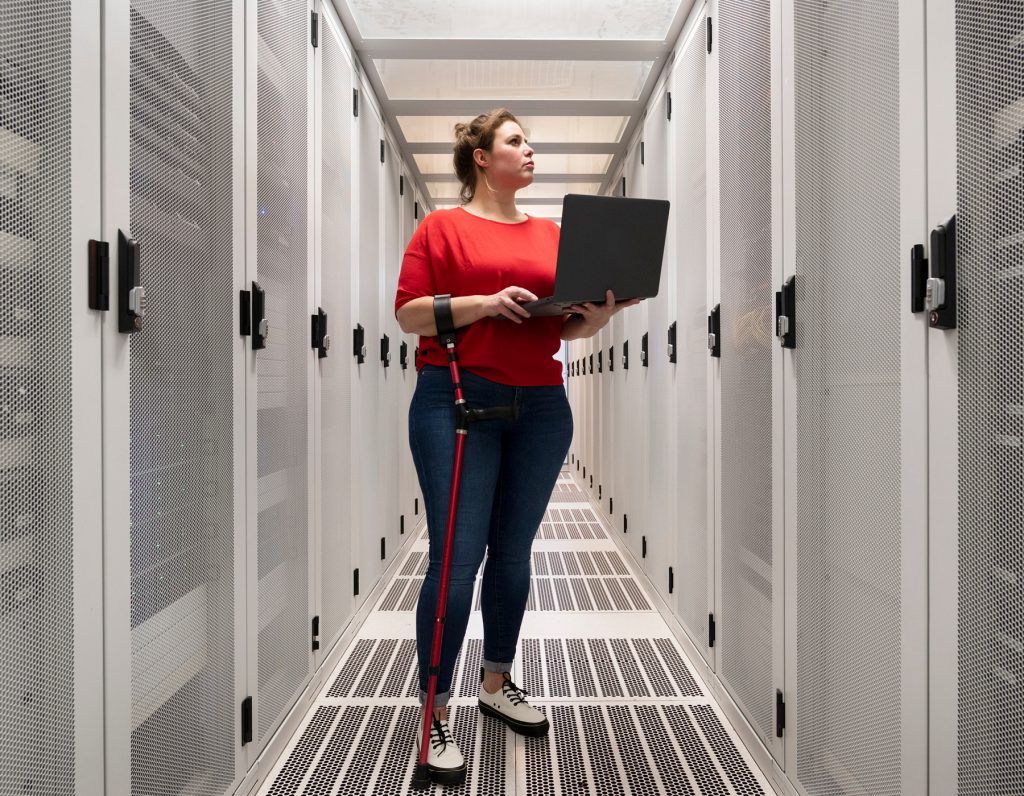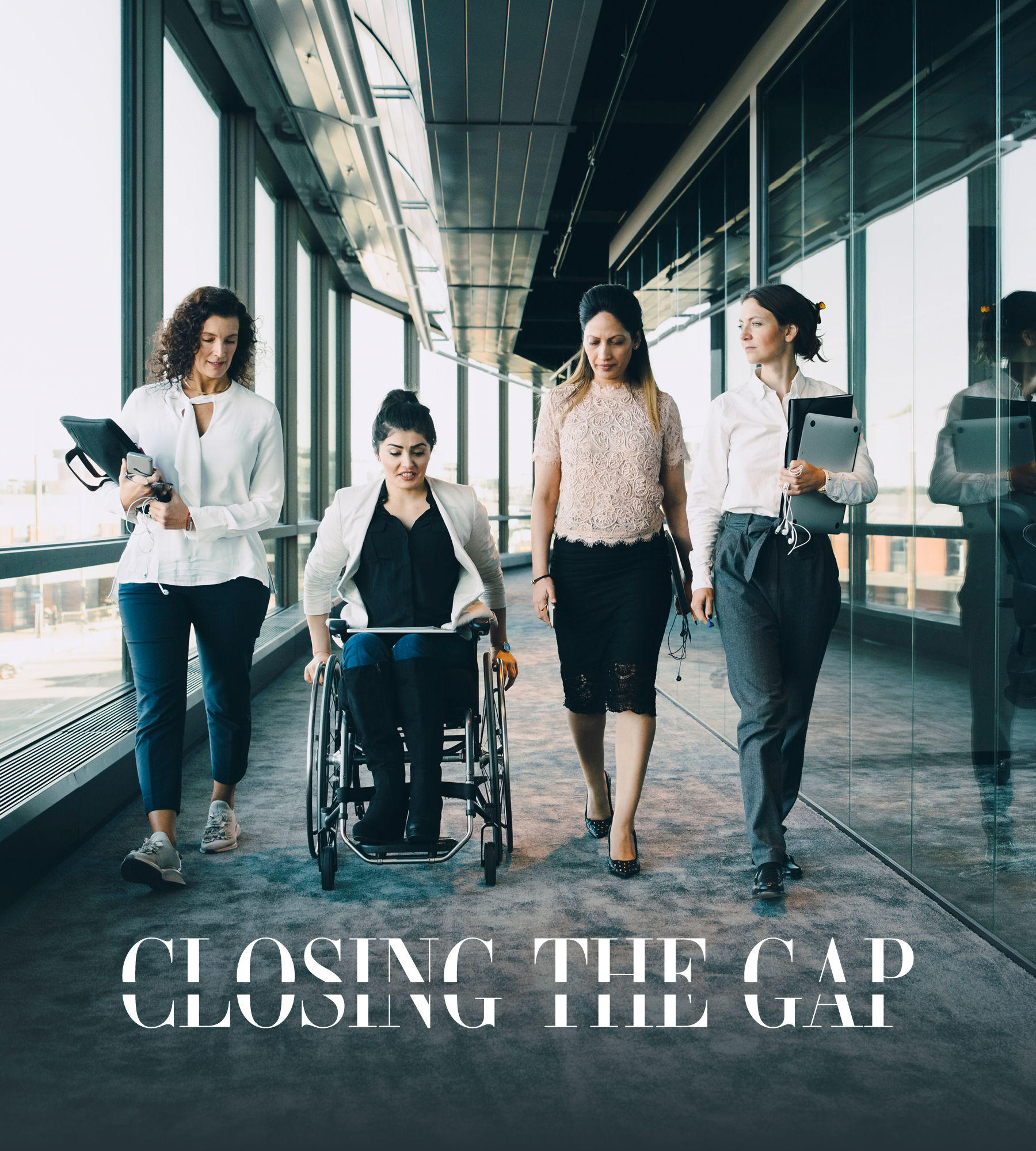Language
You can read the magazine in one of the following languages
People with disability make up 18 per cent of the Australian population – and probably even more if a disability is not diagnosed or disclosed.
That means your employees, your clients and customers, your colleagues, your family members, your friends – they’ll comprise people with disability. It’s also why it’s so important that your organization is accessible and inclusive because your disabled employees need to feel valued, trusted and able to do their jobs.
The social model of disability means that barriers created by society can prevent people with disability from having full access to work, health care, entertainment and art. But by removing these barriers, they can lead full and active lives.
At a 2018 Disability Royal Commission hearing focused on employment, it was found that the proportion of disabled people in the workforce is much lower than that of people without disability: 53.4 per cent compared to 84.1 per cent.
“We’ve been employed at a rate approximately 30 per cent less than the general population during the last 30 years,” said former Disability Discrimination Commissioner Graeme Innes.
It was also found that many disabled people are offered unpaid work experience, but not paid work.
This needs to change. And it can change with you, as CEOs and senior management.
Writer, speaker and appearance activist Carly Findlay
Here are some things to consider. Is your workplace physically accessible? For example, does it have a wheelchair-accessible entrance, a lift, clear pathways, kitchen benches at different heights, accessible alarm systems, accessible toilets, a quiet room in which to retreat?
Is your website and social media accessible with captioned videos, image and video descriptions, content warnings, good color contrasts, easy-to-read text and information in multiple formats (like Word, PDF, plain English, audio and video)?
Are you making your events accessible? Are you holding them in wheelchair-accessible venues, providing Auslan (or the regional equivalent) interpreting, pricing them affordably, catering to dietary needs, providing access information about the event on your website, holding events that aren’t too early or late in the day, providing a quiet room for participants in which to retreat, recording and/or live streaming the event?
Are you ensuring there’s a place for people with disability at every table, especially when working on or talking about disability issues?
Are you working to ensure more disabled people are in adequately paid employment with accessible application and interview processes – job ads and options to apply via Word document, voice recording, Auslan (or the regional equivalent) videos, accessible workplaces, providing flexible employment options (part-time, casual, flexible hours, job share, work from home), and creating a safe space for disabled people to be ourselves and progress within the organization?

Are you listening to and learning from a wide range of people with disability, especially disabled First Nations people and disabled people of color? We aren’t homogenous, and we don’t all think the same.
Are you ensuring your stores and restaurants are accessible (see the event and digital access considerations above) and ensuring accessible changing rooms, counters, seating options and so on, and that your staff have undertaken disability awareness and cultural competency training?
Are you open to feedback about your inaccessibility and ableism, and are you responding empathetically and implementing change? Do you have a disability inclusion and accessibility action plan and are you adhering to and updating it?
Are you assisting disabled people with lodging complaints and advocating alongside us when we encounter ableism and discrimination? One of the kindest things I’ve encountered is when my writing agent and employers have asked how they can support me when I encountered ableism in the media.
Are you calling out your colleagues, family and friends when they use ableist language, explaining why these slurs are harmful to disabled people – even when it’s not directed at disabled people? Nobody ever uses a disability slur as a compliment. A useful guide is on Refinery 29.
Are you convinced that disability is a tragedy or something to be ashamed of? It’s really not. For many disabled people we see disability as a proud part of our identity and rejoice in the disability community.
Are you saying the words ‘disabled’ and ‘disability’, rather than euphemisms like ‘special needs’ and ‘differently abled’? It’s important.
Do you have books by people with disability in your organization’s library? Growing Up Disabled in Australia (edited by me), Disability Visibility (edited by Alice Wong) and Demystifying Disability (written by Emily Ladau) are good to have on your shelves.
Are people with disability included in career development programs? Are these programs accessible?
Are you ensuring that disabled people are employed to do their jobs as accountants, lawyers, healthcare workers, journalists, tradespeople and so on, rather than often being the ones to solve access and inclusion issues in the workplace?
Have you got a succession plan for disabled people to be leaders? Are you making space for them?
Are you doing these things every day?
Accessibility and inclusion for disabled employees isn’t a new thing or something to be feared. All employees have access needs – think caring for children and elderly family, dietary requirements, sit/stand desks, prayer times and work from home arrangements. By asking all employees what their needs are and accommodating them you are showing appreciation, respect and care for your staff. Access provisions help all employees work as best as they can. Employees also don’t have to disclose their disability diagnosis to state their access needs.
I often get asked to advertise job opportunities to the disabled community because people don’t know where to find us. But we are everywhere – you just need to connect meaningfully. It’s important to connect with disabled people and make them feel welcome in your organization.
If you’re having a leadership event, ask us to be a guest speaker (and not just on International Day of People with Disability either). Connect with disability organizations like the Disability Leadership Institute and invite us to industry networking events, making sure the venues and communication related to the event are accessible. Follow disabled people on social media, and engage with us in consulting on disability issues and beyond.

It can be a danger for disabled people to disclose their disability because sadly, discrimination and exclusion occur.
“Strong anecdotal evidence collected by the Disability Leadership Institute over several years indicates that it is very risky to openly identify as disabled in the workplace,” says Christina Ryan, CEO and Founder of the Disability Leadership Institute. “It is particularly risky the more senior people are. It seems that the people who openly identify as disabled in the workplace are the small percentage who have no option to do otherwise. These are people who require specific workplace adjustments or have disabilities that are visibly evident.
“For those who can conceal their disability, or substantially minimize it, the benefits of doing so outweigh the existing risks. Even though hiding it can cause negative consequences over time, such as mental health unwellness or aggravation of conditions, it still seems the preferred choice over the stigma and bullying that many openly disabled people experience.
“Knowing that you already have a much larger disabled workforce available to you is just the beginning. The next step is to create a workplace where your disabled employees feel safe being open about their disability.”
Personally I can’t help but disclose my disability every time I walk into a room. This means I’ve become good at making people feel comfortable around me through conversation and humor. At times in my career I felt I’ve worked harder than people without disability to prove I am capable and worthy. I don’t just mean doing the actual work, but in educating about access and inclusion, and also in being nice to those who have said and done ableist things to me and other disabled people.
It can be hard to be one of the few, if only, disabled people in the workplace. And so I am very grateful for allies who are both disabled and without disability.
I long for the day when the workforce reflects the proportion of people with disability in society. Make 2022 the year you provide meaningful work for disabled people – not just focusing on entry-level positions but also giving us full career development opportunities.
